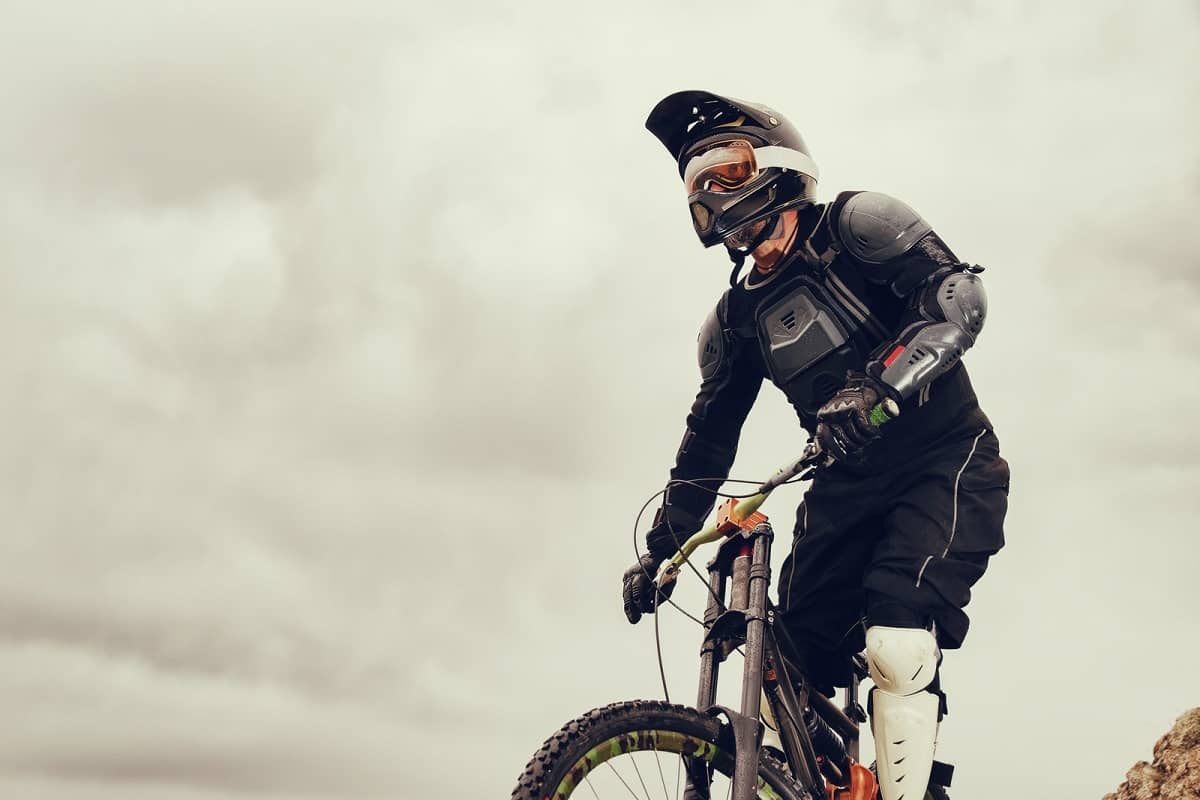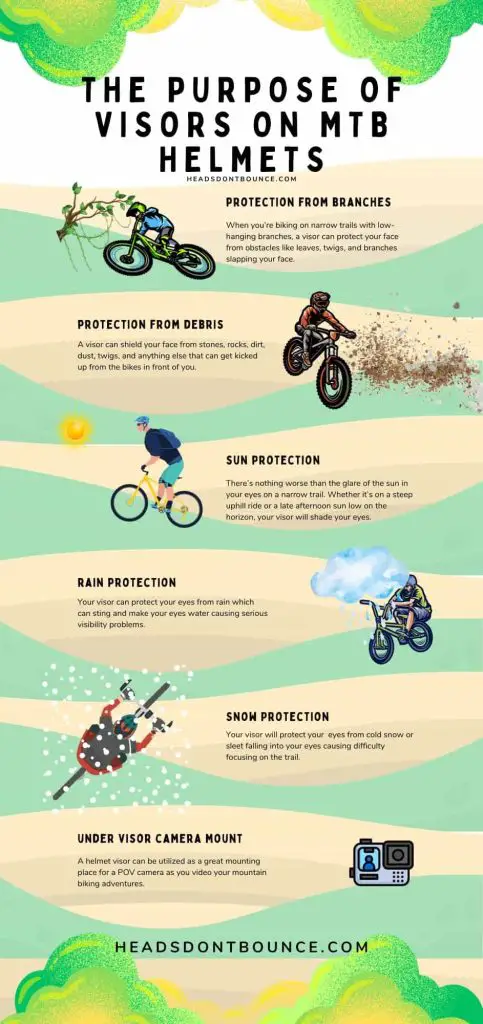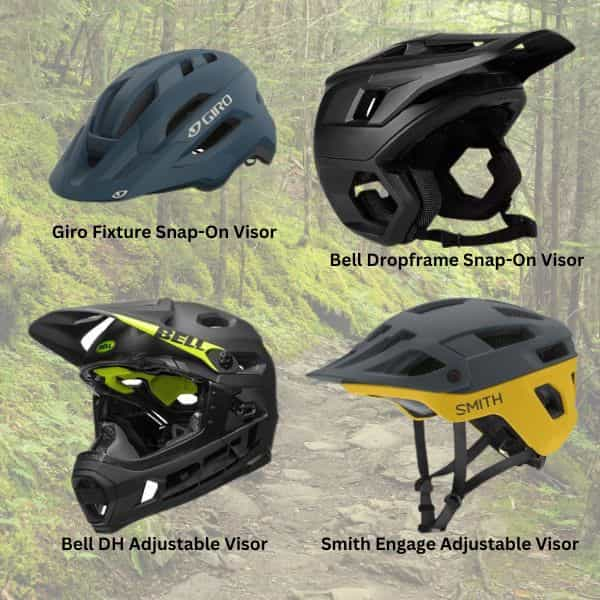Why Do Mountain Bike Helmets Have Visors?
Mountain biking is an exhilarating hobby, but safety should always be a rider’s top priority. Helmets, in particular, play a crucial role in ensuring a safe biking experience, yet one distinctive feature of a mountain bike helmet often raises questions: the visor.
In this article, we’ll delve into the question of why do mountain bike helmets have visors, exploring both their purpose and the various aspects that make them an essential accessory.
Just to be clear, the visor is the protruding part of the helmet that extends over the rider’s forehead, just like in the image below the menu. In some countries, the visor is referred to as a ‘peak’.
Page Content

Disclosure: As an Avantlink and Amazon Associate, we earn from qualifying purchases. Disclosure Statement.
Why Do Mountain Bike Helmets Have Visors?
At the core, the primary purpose of a visor on your mountain bike helmet is safety. Navigating narrow and rocky trails poses unique challenges, and a visor serves as a shield against potential hazards.
Your helmet’s visor provides protection from overhanging branches, airborne debris, and the elements. Imagine a rocky descent where a visor shields your eyes from dust and small rocks, ensuring a clear line of sight.
In addition, a helmet visor can serve as a mount for other cycling accessories, such as a POV camera, night light, or goggles strap clips.
SUGGESTED: Best Convertible Mountain Bike Helmet
In the infographic below you can see a graphic representation of some of the reasons for visors on mountain bike helmets. Of course, to what extent they may or may not affect you depends on where you live and what type of terrain you ride.
You are free to download and share the infographic provided you link back to this page as the original source.

Benefits of Using a Visor
The benefits of a helmet visor extend beyond acting as a defense against scratches and grabby branches, deflecting rocks and other debris, but also allows riders to maintain focus to confidently tackle any trail without worrying about crashes and potential injuries.
Improved visibility is another notable benefit, as visors help riders transition seamlessly between shaded and sunny areas. Additionally, they provide a stylish element, allowing bikers to express their personality through helmet customization.
SUGGESTED: Mountain Bike Helmets For Big Heads
Types of Visors
We can identify three unique types of mountain bike helmet visors, each designed to cater to specific needs. Fixed or Integrated visors were the original visor style and offered a streamlined design, ideal for those seeking minimalistic aesthetics.
Snap-on or Detachable visors are designed based on the fixed visor but offer the choice of being able to remove and/or replace the visor as necessary.
And finally, Adjustable or Flip-up visors provide versatility, allowing riders to tilt the visor up or down based on changing conditions. Choosing the right visor depends on personal preferences, riding style, and the trail conditions you frequently encounter.
| Type of Visor | Attachment Method | Features | Benefits |
|---|---|---|---|
| Integrated Visor | Built seamlessly into the helmet. | Streamlined appearance. | Enhanced overall durability. |
| Snap-On Visor | Easily snaps on/off the helmet. | Quick removal. | Customization convenience. |
| Adjustable Visor | Removable screws on each side. | Tailored tilt. | Versatile protection for varying conditions. |

Potential Drawbacks of Using a Visor
While visors bring numerous benefits, some riders opt to go without. Overgrown branches on trails might snag on a visor, creating potential injuries to riders. Some cyclists raise concerns about aerodynamic drag and added weight, impacting performance.
Vision blocking is another consideration, especially when navigating undulating terrain where a clear line of sight is crucial. It’s essential to weigh these potential drawbacks up against the benefits when deciding whether to forego a visor or not.
RELATED: Full-Face Downhill Mountain Bike Helmets
This content was originally published on headsdontbounce.com. If it appears on another website, it is a violation of the copyright owned by headsdontbounce.com.
The Last Word
The visor is one of the key features that sets an MTB helmet apart from other cycling helmets. While it may appear to be a simple component, the visor’s role is crucial, and it provides essential protection, enhances visibility, and adds a touch of style to your biking gear.
While potential drawbacks exist, the overall benefits make visors a must-have accessory for any mountain biker who wants to stay safe and have a great biking experience. So, before you hit the trails, make sure your helmet is equipped with a reliable visor – your safety and comfort depend on it.
I hope we have covered the question of why do mountain bike helmets have visors to your satisfaction. If you enjoyed this article, take a look at the related reads below for some more interesting reads!
Related Reads:

